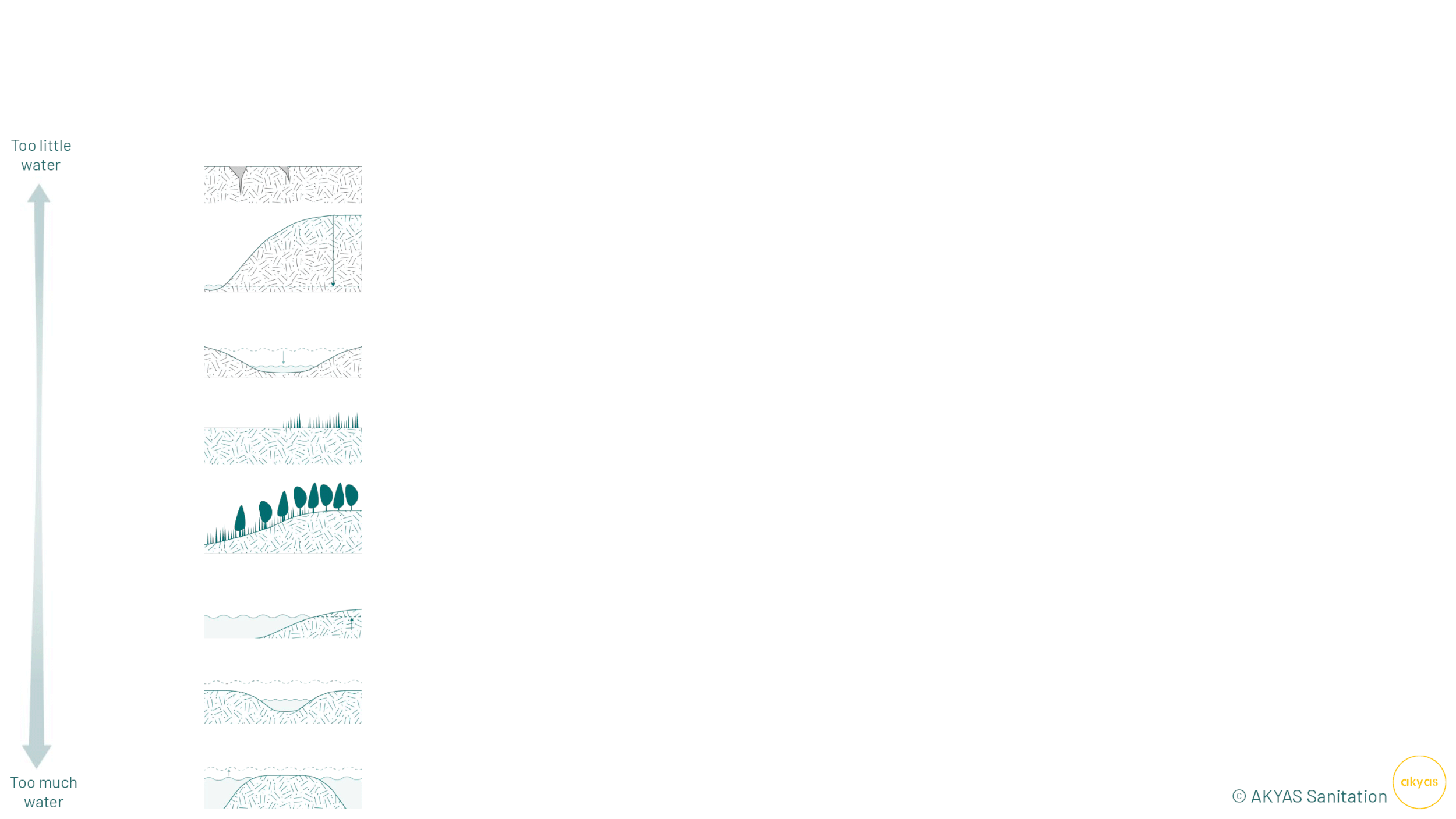AKYAS for Climate Resilience
Five coping combinations for climate resilience
From rural to semi-urban to urban contexts, there are places of too much water, too little water, or somewhere in between. The following visualization provides an overview of these diverse settings through the lens of climate risks, and shows how AKYAS addresses them using five coping mechanisms in wastewater (& water) management.
How to read the infographics above?
The vertical axis represents the geographical characteristics of a locality, ranging from areas with too little water to those with too much. The horizontal axis represents a spectrum of population density, from rural to urban.
The colored rectangles labeled A–E indicate the coping methods that AKYAS has selected for groups of similar contexts.
-
For example:
Combination C, which includes onsite wastewater treatment and aquifer recharge, is suitable for semi-urban areas experiencing a low water table.
Combination B, which involves onsite wastewater treatment and the reuse of treated effluent for irrigation, can be deployed in rural areas with sufficient water availability.
Combination E, which redirects effluent via a condominium sewer for (semi-)centralized treatment, is appropriate for urban areas prone to flooding.
-
The wastewater management approaches described can be enhanced by appropriate installation and AKYAS innovative hardware solutions.

